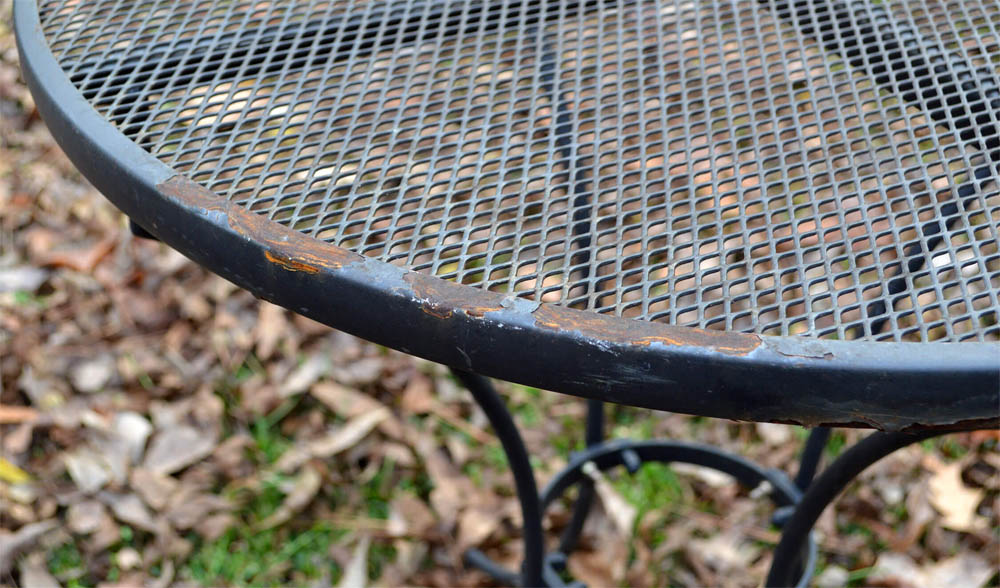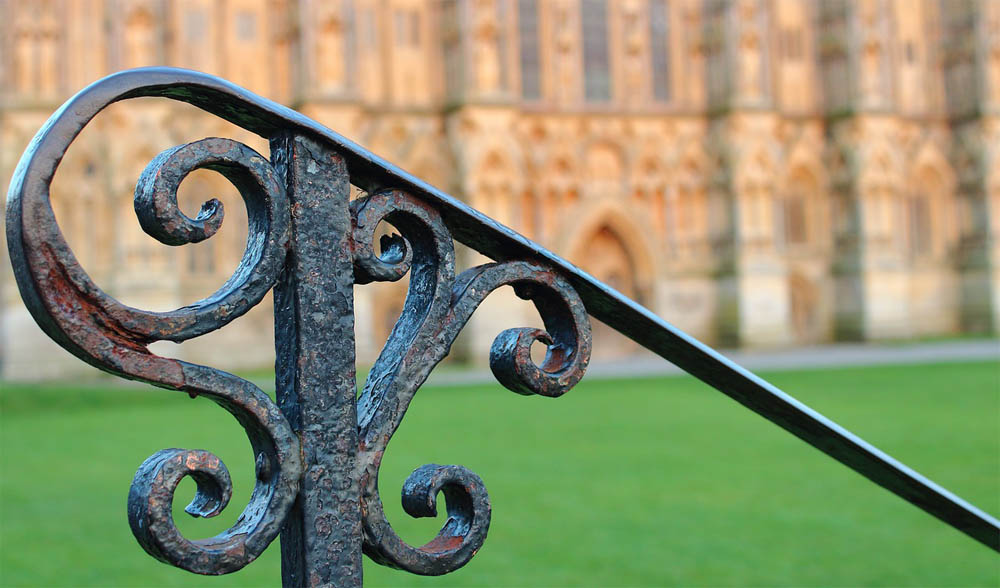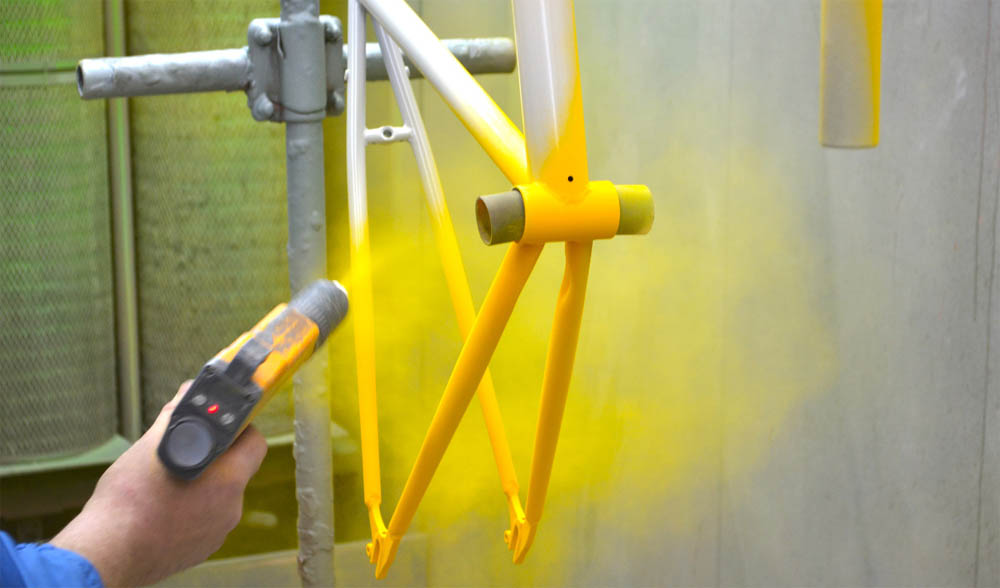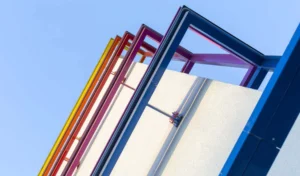Powder coating stands as an exceptional choice for enhancing the finish of metal items, suitable for both indoor and outdoor use. Whether applied to a car, motorcycle, or patio furniture, a powder coat finish not only adds a stylish touch but also serves as a protective shield against environmental elements.
Yet, if you’ve observed the emergence of white or chalky spots or any other signs of deterioration on your powder coat, you may wonder if the changing seasons have played a role. Perhaps you’re contemplating applying a new powder coat to outdoor furniture and are concerned about its durability in varying weather conditions. This information aims to address these questions and offer insights into ensuring the resilience of your powder coat in the face of changing environmental conditions.

The Impact of Seasonal Changes on Your Powder Coating
Numerous environmental elements can contribute to the deterioration of an applied powder coat. Here are four key determinants in this degradation process:
1. Temperature
An optimal temperature range for powder coat storage generally falls between 68 to 80 degrees Fahrenheit. However, few locations worldwide maintain a climate consistently within this range throughout the year. For example, in places like Las Vegas, where summer temperatures soar into the 100s and winter nights see lows in the 20s, indoor storage may become necessary to ensure ideal conditions for your coated parts.
Moreover, prolonged exposure to high levels of UV radiation can result in a substantial reduction in gloss and color washout, potentially reaching 50% or more. This is why standards for the outdoor durability of powder coating often reference climate conditions found in regions like South Florida, central Arizona, or Okinawa (for Japanese regulations) as benchmarks for product performance.
2. Humidity
Elevated humidity levels can adversely affect both the durability and appearance of powder coating. In regions with high humidity, powder coats may absorb and trap moisture from the surrounding air before the curing process is complete, resulting in a discolored and “stained” finish.
For stored parts already coated, maintaining a humidity range between 47 to 55% is generally considered ideal.

3. Powder Coat Quality
Powder coats vary in quality, and the primary indicator of outdoor durability is often categorized as industrial or entry-level architectural grade. Typically, this type of powder coat can sustain its gloss and color consistency for 12 to 18 months in weather conditions akin to those in South Florida.
Conversely, some powder coats excel in outdoor durability, including high-performance exterior durability grade coats and exterior automotive grade coats. Depending on the product, these advanced powder coats can endure 5 to 10 years of conditions resembling those in South Florida without experiencing significant degradation.
4. Powder Coat Type
When considering outdoor applications, it’s crucial to recognize that all powder coats are not made equal. In fact, specific types of powder coating may not be well-suited for exterior use.
Below are four types of powder coating, each accompanied by a brief description of its suitability for outdoor applications:
- Epoxy. While epoxy-based powder coats demonstrate outstanding corrosion resistance, their appearance can degrade rapidly under sunlight and various weather conditions, potentially within a few months.
- Polyester. These powder coatings provide effective resistance against UV radiation, chemicals, and corrosion.
- Urethanes. Similar to polyester, urethane powder coats exhibit lower flexibility compared to their counterparts but boast enhanced resistance to chemicals.
- Fluoropolymers. Fluoropolymers showcase remarkable weathering capabilities, maintaining gloss and color consistency over extended periods, and, in certain instances, even for decades. While alternative powder coating types may be more budget-friendly or suitable for specific applications, fluoropolymer-based powder coats distinctly excel in outdoor use due to their superior performance.

How to Finish or Refinish with a Weather-Resistant Powder Coat
How should you correctly apply a top-tier, weather-resistant powder coat to your metal materials for optimal performance? The application process involves three fundamental steps:
- Sandblasting. Sandblasting, also known as media blasting, is the abrasive process that removes paint and surface contaminants from metal materials. Through a stream of compressed air, sand or other particles are propelled towards the workpiece, serving as a crucial preliminary step before the actual application process.
- Applying. Prior to applying the powder coat, the surface is typically prepared with primers and rust deterrents to establish a solid foundation. For example, an iron phosphate pre-treatment followed by a zinc-rich primer can effectively deter rust formation. Subsequently, the actual powder coats are applied over these rust deterrents, adhering to the material’s metallic surface through electrostatic charge.
- Curing. The curing process is often misunderstood in powder coating projects. To successfully cure a powder-coated object, it must undergo exposure to intense heat, typically through oven baking. The specific temperature and duration in the oven vary based on factors such as the powder coat type and the object being coated. Inexperienced operators commonly make mistakes like under-curing or over-curing during this final phase, underscoring the importance of adhering to precise specifications outlined in an accurate cure schedule. After the baking process, it’s advisable to store the object away from potentially damaging weather conditions until it has fully cured.
Selecting the right type of powder coat for outdoor applications is paramount for ensuring durability and prolonged lifespan. Equally crucial to the success of your project is the sandblasting, application, and curing process. Ultimately, metal materials treated with proper powder coating not only enjoy a better appearance but also boast increased longevity.
Cooperate with China-Static
For those seeking to preserve the “brand-new” aesthetic of their outdoor furniture, auto parts, or other metal items, look no further than our experts at China-Static. Let our skilled technicians apply the most weather-resistant finish available, ensuring that the powder coat remains the crowning touch on your car, motorcycle, or patio chair for years to come.





